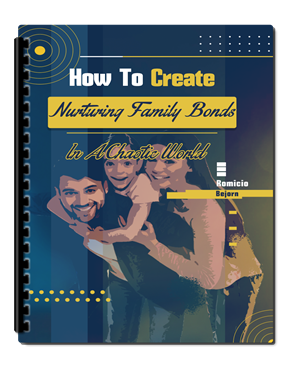Have you been planning your wedding since you were just a little girl?
I imagine that as you grew up, you probably went through hundreds or maybe even thousands of scenarios for your wedding.
Did you hold make-believe weddings with your Barbie and Ken dolls?
I bet that you fantasized about the style of your dress to the theme of your wedding; these may have changed as you grew older and your sense of style developed.
Or perhaps you have had one wedding fantasy that has stayed with you from a very young age.
Regardless of whether the wedding plans taking place in your imagination have changed from day to day or year to year or whether they have remained the same, chances are this will all change when you start planning for real.
From the moment the special man in your life proposes, you begin planning your wedding all over again.
Only this time it is for real.
No matter how excited you are about getting married, planning a wedding can be extremely stressful, which can take the fun out of the whole process and put a damper on how you envisioned your Big Day ever since you were a little girl.
I won’t sit here and downplay how challenging it is to pull off the planning of a successful wedding.
However, this guide will discuss some of the highlights that can make the process a little easier.
The success of your wedding begins with proper planning, period!
Today you’ll learn 5 Wedding Planning Tips That Can Reduce Stress so that you can enjoy the process, challenges, and all.
Let’s dive in…
1)) Choose A Wedding Date
The process of planning a wedding starts with choosing a date. Once you have this set, you can proceed with everything else, but a great deal rests on the date.
It may dictate factors such as your style of dress, the theme of the wedding, the design of your invitations, and the colors you choose.
Consider the date carefully. You may want to impulsively pick a date just weeks away, but this won’t give you much time to plan properly.
Consider selecting a date at least six months away.
Work with your fiancé to choose a few dates and then begin contacting banquet halls and churches to ensure you can reserve a place for the wedding ceremony and the reception on the date you choose.
You may want to avoid days that coincide with other significant family events such as birthdays and anniversaries, but in some cases, this may be unavoidable.
Create a Wedding Timeline to Help Keep You on Track
Of course, you can plan your own wedding, but you should realize there will be a great deal of work involved.
You should also realize there is a general timeline that should be followed to ensure tasks are completed on time.
I will provide a basic timeline for the year leading up to your wedding day.
The process of planning a wedding typically begins at least one year before the actual wedding day.
At this point you know that the first task couples should accomplish at this time is selecting a date for the wedding.
This is important because many reception halls book up early, so choosing a wedding date at least a year in advance can prevent you and your fiancé from missing out on your dream location.
It also helps to ensure friends and family members have plenty of time to make arrangements to attend your wedding.
During this time you and your fiancé should set your budget, book the location for the reception and begin shopping for a wedding gown.
Approximately 8-10 months before the wedding date you and your fiancé will begin making some serious decisions about the wedding.
You two should formalize a theme, select bridesmaid dresses, and create a gift registry.
You and your fiancé should also interview and select a number of service providers including a photographer, videographer, caterer, and entertainer such as a band or a DJ. You should also create your guest list during this time.
Approximately 5 to 7 months before the wedding date, you and your fiancé will still be making important decisions and plans for the wedding.
Now is the time to order wedding invitations and finalize the guest list.
You will also want to begin interviewing cake designers and will want to select one soon because good cake designers may book up months in advance.
Plans for the honeymoon should also begin during this time.
You will also want to reserve a block of rooms in a local hotel at this time.
By reserving a large block of rooms, you’ll likely be able to secure a discount for your guests and save your out-of-town guests the trouble of having to search around for hotel accommodations.
Approximately 3 to 4 months before the wedding the whirlwind of planning begins to slow down, but there is still work to be done.
During this time you and your fiancé should shop for and order wedding bands and select a florist.
You will also want to shop for and order favors at this time. You’ll also want to select and reserve the groom and groomsmen attire.
During this time you and your fiancé should meet with the caterer to finalize the menu. This is the time to send out invitations for the wedding.
Approximately two months before the wedding date the planning preparation picks up.
Now is the time for you and your fiancé to make plans for the rehearsal dinner. You will have to start scheduling your fittings as well as fittings for the bridesmaids and flower girl.
The groom should confirm the reservations for his attire and the attire of his groomsmen.
One month before the wedding you and your fiancé are into the home stretch of planning.
You and your fiancé should apply for the marriage license and confirm details with all wedding service providers.
You should meet with your hairstylist and make-up artist to decide on wedding day styles.
The last two weeks before the wedding is a virtual whirlwind of events. You two will have a lot to do and will likely need help from others to accomplish these last-minute details.
You will need to call guests who have not yet responded, provide a final headcount to the caterer, create seating plans, confirm floral deliveries, confirm honeymoon reservations and pick up wedding gowns and tuxedos.
2)) Make A Guest List
Once you set a date for a wedding, it is time to make your guest list and inform everyone on the guest list of the date you have chosen.
If the wedding is only a few months away, you can go ahead and send out invitations as soon as you can get them designed and printed.
However, if the wedding date you have selected is more than a few months away consider sending out save-the-date cards approximately 6-8 months before the wedding.
This lets others know when the wedding can take place so they can mark it on their calendars, but does not require them to make a commitment just yet.
Trimming down your guest list is a primary step.
The significant people who should not be forgotten include only your family and closest friends.
The more you feel obliged to invite the entire office and the people you have not talked to in a while, the more you will be spending exponentially.
Shortening your list will not only trim down your catering costs, but also expenditures on rentals, printing costs, gifts, and so on.
It is advisable to reduce your guest list by category.
For example, invite relatives only who fall under your second cousin up to the closest.
Invite your best friends in college instead of including the entire members of your organization.
Shortening your guest list will also help you cut expenses on postage and printing for wedding invitations.
Instead of sending them all through the mail, you can personally visit the people who are close to your home or office.
Also, make your reply slips through the mail, telephone, or mobile phone.
For example, there are websites that offer survey services for events. Event invitations are posted on the site and people can answer with “yes I’m going,” no, or maybe.
You can also get discounts on catering services and room rentals if your wedding day is in the off-peak season.
These dates are usually on weeknights and Sundays. For traditional wedding celebrations, however, it is advisable to schedule your wedding day on religious holidays.
This will cut your decoration expenditures since churches already have ornaments.
3)) Pick Out A Venue
Creating your guest list can be a challenging part of planning your wedding.
One important factor to consider is the maximum number of guests allowed in the banquet facility you have booked.
Ideally, you would have a general idea of the number of guests to expect before you started looking for a facility for your reception so you can choose a suitably sized location.
You will also have to consider the rate charged for each guest at the reception.
This is especially important if you’re on a tight budget.
Using the Internet to Find a Wedding Location
Most brides and grooms begin the process of planning their wedding by searching for locations for the wedding ceremony and the wedding reception.
Before the Internet became so widely popular this was typically accomplished by spending a day, or several days, driving around to different reception halls and banquet facilities to select a suitable location.
The happy couple would have to remember details about each location to make the best possible decision after seeing several options.
However, with the Internet, you and your fiancé can visit websites for all of the reception halls in your city in a matter of minutes.
Most of these locations have detailed websites with pictures, video walk-throughs, and floor plans available.
Most even have calendars showing availability.
You and your fiancé can narrow the choices down to just a few local options you want to visit before making a final decision.
You can even use the Internet to begin planning a destination wedding.
You and your fiancé may not see the venue before the wedding arrangements are made, but through photographs and videos, you can be sure you’re selecting the right location.
4)) Go Dress Shopping
Once you get through the logistics of choosing a date and location and inviting guests, the fun part of the planning process starts.
If you are like most brides your next step will be to start dress shopping. This is actually a good idea because finding the perfect dress can take time.
Also, once you find this dress, it will take a while for the dress to be made and you will then have a number of fittings to ensure the dress fits you perfectly.
Tips To Help You Select Your Wedding Dress
Most brides-to-be had no hesitation when their fiancé proposed.
They may have known this day was coming and responded with an enthusiastic yes before the fiancé even got the question out.
Even if they were completely caught by surprise by the proposal, they likely responded quickly after a moment or two of stunned silence.
However, when it comes to selecting a dress for the wedding day most brides-to-be have a lot more trouble making a decision.
They may waffle between two dresses or even have trouble narrowing their choices down to less than ten options.
Let me provide you with a few tips for selecting a dress for your big day, especially if you’re struggling.
Most brides find that choosing a wedding date really helps to narrow down their choices right away.
In fact, many brides can cut the suitable options available in their local wedding gown shop by 50% by choosing a date.
This is not true for all brides though.
That is because most brides easily make this decision because they are not willing to wear a wedding gown that is meant for summer for a January wedding.
Likewise, they are not willing to wear a wintry-type wedding gown for a June wedding.
However, there are always some brides for whom the season does not matter and they want the perfect dress even if it is not appropriate for the current season.
I recommend beginning the process of wedding dress shopping right from your own home.
Spend some time looking at online retailers and wedding magazines to get yourself started.
Once you begin looking through pictures of wedding gowns, you will begin to learn what you do like and what you don’t like.
This will save you a great deal of time in the long run, because you can look at hundreds of pictures online or in magazines in just a fraction of the amount of time it would take you to try on the same number of dresses.
However, if you do your homework, you can walk into a bridal shop with a good idea about the types of dresses you want to try on.
You should still go into the dress-shopping experience with an open mind but won’t have to try on everything in the store to figure out what you like.
I also highly recommend limiting the number of people you take with you when you go dress shopping.
This is critical because the more people you bring with you, the more opinions you will hear about each dress and this will make choosing one much harder.
You should also be careful about who you will invite to come dress shopping with you.
You should only invite trusted friends or family members who will be honest with you about how a dress looks on you without being offensive.
You don’t want someone who will be afraid to tell you that a dress does not look good on you, but you also don’t want someone who will hurt your feelings during the process.
Shopping for a wedding dress is supposed to be a fun experience, so keep that in mind when you invite others to come along.
5)) Decide On a Theme
After you have decided on a dress other planning considerations may become much easier.
For example, if you were unsure of a theme, you may feel more confident once your dress is selected.
The types of flowers you choose, colors, and styles for bridesmaid dresses and favors for the wedding will also become easier decisions once you have selected a dress because you will want to make decisions that will complement the dress perfectly.
Tips to Help You Decide On a Wedding Theme
Without a doubt, one of the most fun decisions you and your fiancé will make during the process of planning a wedding is choosing a theme for the wedding.
It is not necessary to choose a theme for your wedding, but it can certainly help to give the wedding a more defined personality.
Also, having a particular theme for the wedding can make it much more fun for the guests.
I will provide some information on how you and your fiancé can integrate a theme into all aspects of your wedding and will provide some advice on choosing a theme.
Couples who wish to incorporate a particular theme into their wedding plans should make a decision fairly early on in the wedding planning process about the type of theme they want to have.
It is important to make this decision early because most couples start shopping around for invitations, thank you cards, and personal stationery approximately five to seven months before the wedding date.
This will give the couple plenty of time to select these items, order them and have them delivered in time to send the invitations out at least three months before the wedding date.
Selecting wedding invitations that coordinate with the theme of the wedding will give guests a sneak preview of what to expect at the wedding.
If the wedding invitations can be used to give guests a sneak preview of the theme for the wedding, the favors can be used to send guests home with a memento of the wedding which will always remind them of the theme.
Incorporating the theme of the wedding into the favors for the guests is a good idea because it helps to create a memory for the guests.
When favors are chosen without a great deal of thought or consideration, they are often discarded shortly after the wedding.
However, when the favors are chosen carefully to be tasteful reminders of the wedding the guests are much more likely to hold onto these items.
From the invitations to the favors, there are many opportunities for the couple to tie the different elements together to coordinate with the theme.
The bride’s gown, the groom’s attire, the cake, the place settings, the music, the food, and the floral arrangements can all be tailored to really match the theme of the wedding and create a sense of cohesion.
You and your fiancé will have to decide how many of these elements you want to incorporate into the theme. It is possible to allow the theme to extend to all elements of the wedding without appearing cheesy but is also easy to overdo the theme.
For this reason, the couple should be careful to avoid making tacky decisions.
Finally, while finding ways to incorporate a theme into every aspect of the wedding may not be difficult, many couples find selecting a theme to be a considerably more difficult decision.
The best advice I can offer is for you and your fiancé to select a theme that is truly meaningful to you both.
This is important because as much as you and your fiancé want your guests to have a good time, the wedding is for you two, will regret your decision if you’re not true to yourselves.
I recommend selecting a theme that will be fairly easy to incorporate into a number of different elements of the wedding.
This is important because an obscure theme may sound like a great idea, but if the couple is not able to find more than a few coordinating design elements the guests may not even be able to determine whether or not there was a theme to the wedding.
If all else fails and you really feel as though you’re in over your head with planning your wedding, you may want to consider hiring a wedding planner to handle all of the details.
Let’s close this out…
Conclusion
It’s no secret that getting married is not as easy as one watches it in movies. Planning a wedding is a tedious job with many moving parts.
Several important details and considerations are taken into account.
The primary task in the preparations is the budget.
The question of how much is available and who is footing the bill are important questions in setting the budget.
Hiring a wedding planner is practical for busy working couples who have less time to spare for the preparations.
If the budget is tight, there are also consultants who work by the hour. An outsider’s perspective is beneficial to both you and your fiancé.
Once the budget is set, the next step is creating the timetable of schedules.
The important factors to consider include honeymoon, work schedules, holidays and family occasions, and day of the week.
Now, choosing the ring and announcement to family, relatives, friends, and other significant others come next.
Our modern times suggest that couples choose the ring together.
Announcements may come formally or informally.
Traditions though recommend that the groom’s mother take the initiative to communicate with the bride’s mother.
Usually, a dinner is set up for the families of both parties to get acquainted. This will be helpful in the following days of the preparations.
In some countries, newly engaged couples send an official announcement to a local newspaper or magazine.
After making the wedding known to all, the second essential is the guest list.
This list usually affects several aspects of the wedding, especially the budget and the size of the party.
Dividing the guest list into five categories will better sort out the list:
- Bride's List
- The Groom's
- Couple's Common Friends
- Groom's Parents' List And
- Bride's Parents' List
Alongside the list is your and your fiancé's decision on invitation card designs and packages.
These details match the overall tone of the wedding.
Proofreading the invitation cards is a very important task however tiresome it may be.
The ceremony and reception music, and flowers will set the mood of the wedding.
Like the invitation, these things should match together to express the style and theme of the wedding.
The same with the wedding gowns, bridesmaids' dresses, and the groom’s attire, they are usually decided based on the theme.
The photographs and videos should not be forgotten for they will immortalize that one memorable and valuable once-in-a-lifetime moment.
Many wedding planners suggest taking formal shots a week before the wedding to avoid stress.
Then when almost everything is done and decided, the next step is the rehearsal, which reduces the risk of ceremony disappointments.
Rehearsal parties immediately follow the rehearsal. This is a chance to mingle with family and friends.
The ceremony site sets the tone of the wedding.
Traditional weddings are celebrated in church; however, there are many non-traditional that have emerged since the ’60s and ’70s.
Beach and garden weddings are just a few examples of the latter one.
Last but not the least, are the reception and catering. Included are the place, the food, and the wedding cake.
It is pretty much anything you and your fiancé want as long as it fits the budget.
Other side events organized during the wedding planning are the stud party and the wedding shower.
These are some of the exciting parts of wedding traditions.
Although there’s a lot more to planning a successful wedding, today you’ve learned some powerful fundamental tips that can help you reduce stress.
The 5 Wedding Planning Tips That Can Reduce Stress is a great starting point.
Good luck planning for your big day!
Download Our Free E-book!







